It is now less than a week until the Nightingale Lecture and just over a week until the Society for Landscape Studies conference, with the following Saturday 5 October being the Medway History Showcase at the RE Museum, Gillingham, among other places this is now featured on the CAMEMS website: https://www.hugofox.com/events/medway-history-showcase-2024-88271. If these exciting forthcoming events are of interest, please do join us. After that this week I’m going to feature the meeting to discuss the interim evaluation report for the ‘Canterbury’s Aphra Behn’ project report and Peter’s presentation to the Kent History Postgraduates group.
First the Nightingale Lecture, a joint event of the CKHH and Brook Rural Museum, which this year will be given by Dr John Bulaitis on Tuesday 24 September at 7pm, wine reception from 6.30pm, in the Michael Berry Lecture Theatre, Old Sessions House, Canterbury Christ Church University CT1 1PL. John’s title is ‘Book Launch – Tales from The Tithe War’ and he will focus on important Kentish incidents and participants who were involved in this bitter conflict. Books for sale at a special price will be available on the night. Booking not required and all welcome, there will be a voluntary retiring collection.
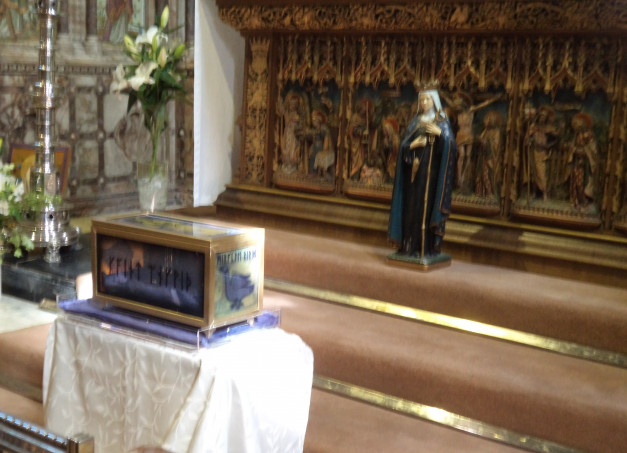
The ‘Sacred and Profane: the landscapes of Kent’ conference will be on Saturday 28 September at St Paul’s church, Canterbury CT1 1NH, 9.30 to 16.30 and amongst the speakers we have well-known geographers Professor Peter Vujakovic and Dr Chris Young. Also, Tim Tatton-Brown and Dr Andrew Richardson who will be known to many of you, as well as Drs Claire Bartram and Catriona Cooper from Canterbury Christ Church. The Sunday field trips will be led by the well-known archaeologist Keith Parfitt and we will be exploring Dover’s Western Heights in the morning and the house and landscape of Old St Albans Court at Nonington in the afternoon. For further details and to book, please see: https://www.landscapestudies.com/sls-annual-conference-september-2024/
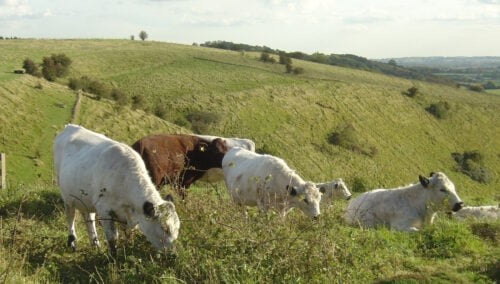
Last Friday I joined members of the core Canterbury’s Aphra Behn project team including Dr Astrid Stilma, the project co-lead (CCCU), Professor Elaine Hobby, project leader (Loughborough University) and Charlotte Cornell, project partner (Canterbury Commemoration Society), and a host of representatives from many other societies and other organisations to consider their interim report and discuss the next steps going forward. It was interesting reviewing what has taken place during this 12-month AHRC-funded project as the team has sought (successfully) to give her wider recognition in Canterbury.
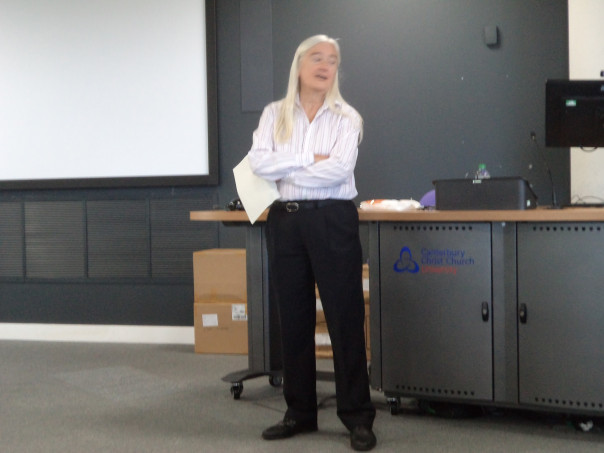
Among the project highlights have been the exhibition at the Beaney, the media coverage including broadcast coverage on BBC Radio 4, BBC Radio Kent and ABC Australia, newspaper coverage in the Guardian and Observer, with the possibility of a Netflix film in the future, and the discovery of a rare copy of a first edition of the 1688 novel Oroonoko by Behn. The project team were also able to take part in the Canterbury Festival, produce a production of Behn’s ‘The Amorous Prince’ which sold out during its three-night run and is the first time this play has been put on since the 17th century and take part in the ‘Being Human’ festival.
It was similarly good to record that many of the scheduled events had taken place in and around Canterbury, including 7 at Canterbury Christ Church of which several featured in the CKHH blog. The team with others had also ventured further afield with a tour of Westminster Abbey and flower-laying on Behn’s grave and a tour of Vita Sackville-West’s Sissinghurst House and Gardens. Consequently, having reviewed the project’s objectives of delivering research-informed public events and the sustained development of collaborative partnerships with local stakeholders. The project’s website is in place and will be further developed over the next few months. A linked development has been the project’s social media strategy, which has involved material displayed by the Beaney, CCCU including CKHH, of course and the Visit Canterbury Instagram. Helen Wright was heavily involved in the evaluation framework and part of this will involve a second survey of people in Canterbury High Street to gain a measure of the public awareness of Behn to compare with the survey conducted before the project started.
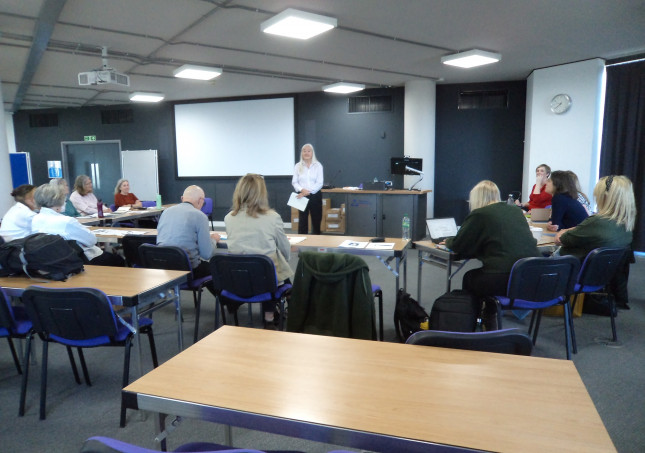
Having considered the project’s outcomes and how the team have very successfully built public awareness and momentum, we discussed what has yet to be done which will include the locating of the new statue of Behn outside the Beaney. This will provide a great focus and will aid further development of Aphra Behn in Canterbury, especially by individuals and organisations based in the city. As Elaine said, this has involved a great deal of hard work, but the results have been excellent and provide a very sound base for future initiatives. So, it will be interesting to see how this all develops.
Moving on, Peter’s presentation to the Kent History Postgraduates was on his research into the Kent quarter sessions over the 17th century. As he said in his introduction, he is seeking to explore how these records can help the historian to understand the people and their society, both from the viewpoint of those before the court and those sitting in judgment upon them. Even though the records generally provide very few details about the personnel involved and the circumstances of the incident, some are slightly fuller. Peter offered a couple of examples and deconstructed the court entries to show just how much can be gleaned, for example, about social and gender relations.
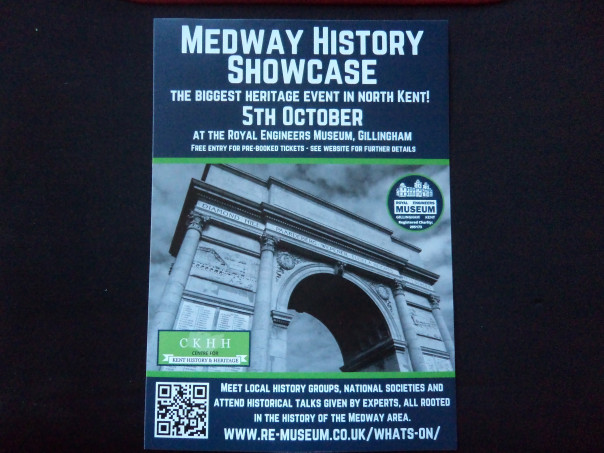
Having set up his parameters, Peter brought in the topic he wished to focus on, the cases involving the term ‘bastard child’, for he sees such cases as providing a way into an investigation of poor relief by the parish but also by other agencies. Moreover, even though only about a third of this group of cases provide more than just name and date, he led his audience through how he has started to focus on these and his research findings thus far. These are extremely interesting because they denote the importance, for example, of midwives within the community and how they were viewed by different groups in society as exemplified by those in the courtroom (and the wider community).
Peter looked, in particular, at the social and economic position of servants, the role of life-cycle servanthood which in turn brought in factors such as age and marital status and how these factors were part, even if implicitly, within some of the cases he has been researching. This led on to his consideration of the men involved and the way marriage or the promise of marriage was a factor, which has parallels to the work by Jeremy Goldberg on the York church court cases three hundred years earlier.
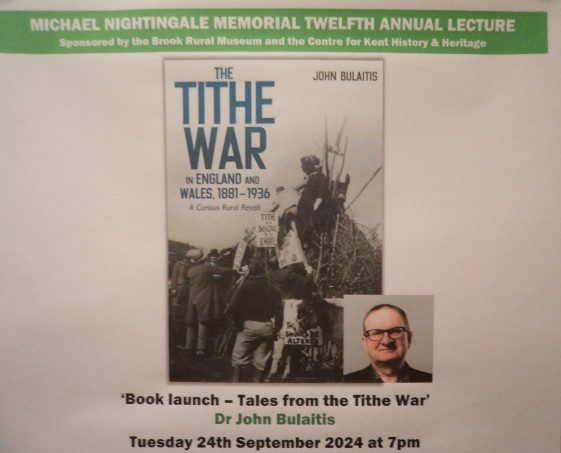
As Peter said, this had been a whistle-stop tour through a small section of these quarter session records, but he is right that it had illustrated the potential of such sources for his research topic. Furthermore, he had demonstrated the critical nature of close reading and how this needs to be done with and against the text to elucidated ideas about neighbourhood and community, vital aspects of early modern society. This excellent presentation generated questions and comments from those in the room and online, and while acknowledging that these sources are challenging for the researcher to work with, Peter’s presentation equally demonstrated their potential for the social historian interested in the poor, poverty and its relief in this period.
 Centre for Kent History and Heritage
Centre for Kent History and Heritage Sheila Sweetinburgh
Sheila Sweetinburgh 1532
1532

